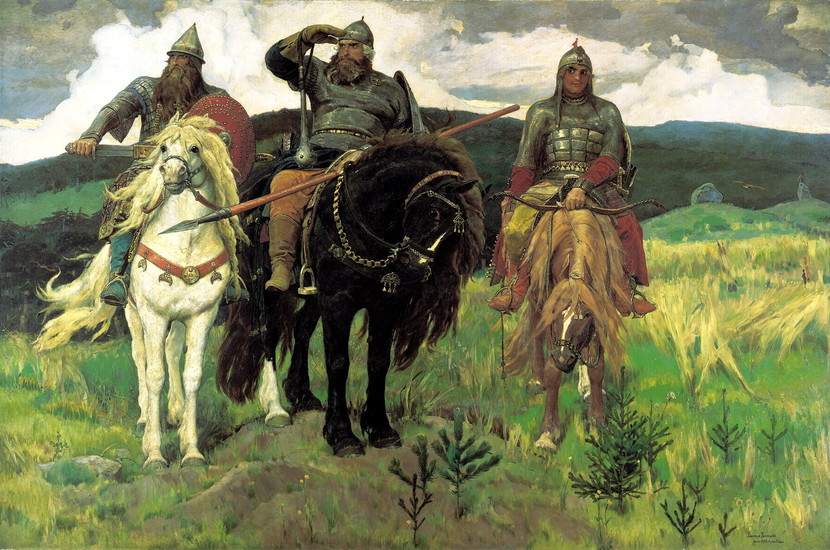As the Russian is waiting for his order, he sighs irritatedly: "These long intermissions aggravate me horribly! (..) now it's three o'clock, and I have an anniversary dinner at five. The Frenchman – Monsieur Pourquoi – is taken aback and protests: "Pardon, monsieur, you are already eating dinner"!
Russian cuisine is undoubtedly the most important component of the Russian sense of collective identity that allows to distinguish themselves from the others. The imprint on both the kitchen and the eating habits left by the severe climate and the country’s dense history is tenaciously present and can be traced back to each and every meal up until modern times.
Allow us to remind you that the vast majority of the Russian population used to be peasants until the industrialization that occurred quite late in history. Therefore, besides the cold winters that made everyone consume nutritious food on a regular daily basis, the arduously long working days of peasant life helped shape the average Russian day.
Did you ever wonder what a Russian eats and how many times a day? I did, especially after reading Chekhov’s story and conducted a little research for you! However, before we dive in, bear in mind that each meal deserves its own article.
Dawn is announced by breakfast (zavtrak) – the first meal of the day. Since Russians have to rush to work, a typical breakfast is comprised of bread, which holds a special (and even sacred!) meaning in Russia. As a matter of fact, there is always bread on the table, during every meal. Bread is generally eaten with butter as a spread, various dairy products such as cottage cheese (tvorog), jams made of Russia’s large array of berries and honey or something heavier in the form of sausage (kolbasa). Kasha (porridge) is believed to be one of the oldest foods in Russia and ensures that breakfast never becomes a boring happening. While in the west porridge is usually made of oatmeal, in Russia it can also be cooked from rice, semolina, buckwheat and millet.
Russians are very flexible when it comes to meals. This is why there are soggy, milky kashas and more crumbly dry ones prepared using water. Besides breakfast, a bowl of porridge can be turned into a sweet dessert, served as a savory main course or just as a salty accompaniment to meat.
A couple of hours later, an (optional) meal introduces itself: vtoroy zavtrak, or the second breakfast, which can be classified as a snack or an easy meal and is considered to be the perfect excuse to drink tea accompanied by some pirozhki (mini-pies) with rich fillings such as meat, fish, cheese or vegetables like cabbage, mushroom or potato. Pirozhki can also come with sweet fillings.
The Russian lunch (obed) is the most important meal of the day and it takes place quite late between 12 and 3 pm. You might have come across the so-called “business lunch” offered by restaurants to office workers on their lunch break. The Russian lunch is a two-course meal (sometimes 3) and includes a soup as the first course. Soups demonstrate the country’s vastness par excellence! As Russia spans the largest territory on earth, each region has its own adaptations based on the regional products that are available. During winter, in order to withstand the cold, hot and thick soups are preferred. Everybody knows borsch, but there is more! Shchi is a cabbage soup, which can come in sour (kisly) versions, with meat and/or even without cabbage at all. Or even with sorrel instead. Solyanka is a very hearty and spicy soup that is prepared using several types of meat (the minimum is 3). Ukha, on the other hand, is a traditional fish-based soup. In summer, the Russian kitchen suggests refreshing cold soups such as okroshka, which is basically a fine-cut salad with cooked meat or fish prepared in kvas (a traditional fermented beverage made of rye bread).
As for the main course, which consists of a fish or meat dish, one can choose from kotlety (meatballs) accompanied by potatoes, grains or fried mushrooms. Go for the beef stroganoff, which is a meat stew cooked in smetana (sour cream) typically served with boiled or mashed potatoes. Another familiar Russian dish is pelmeni (Russian dumplings), filled with meat and onions that lends its flavor to the thinness of the dough. Salads are also very popular in Russia. The most widely known salad is undoubtedly "Olivier" – better known abroad as the Russian salad. The original "secret" and exclusive recipe, firstly created by the cook Lucien Olivier (whom it is named after) in the 1860's, gave way to cheaper and more available ingredients later on and gained immense popularity among the general population during the Soviet period. This salad, which is an absolute must on New Year’s Eve, is made with diced potato, peas, eggs, cucumbers, and mayo or sour cream. One other delicious Russian specialty is herring under a fur coat (seledka pod shuboy). The name says it all: salted herring with layers of grated vegetables, beets, onions and mayonnaise, each and every layer covering the other delicately.






